For those who witnessed the news footage on their television screens back on September 11th., 2001, the typical and understandable reaction was one of utter disbelief, shock, and horror. The terrorist attack on New York’s World Trade Center will live long in the memories of all who witnessed the last moments of so many, either on the flights that were targeted or the workers trapped in both the North and South Towers – even more so for the New York residents out in the street that day, just simply going about their business – spellbound by what was happening above them in the sky.
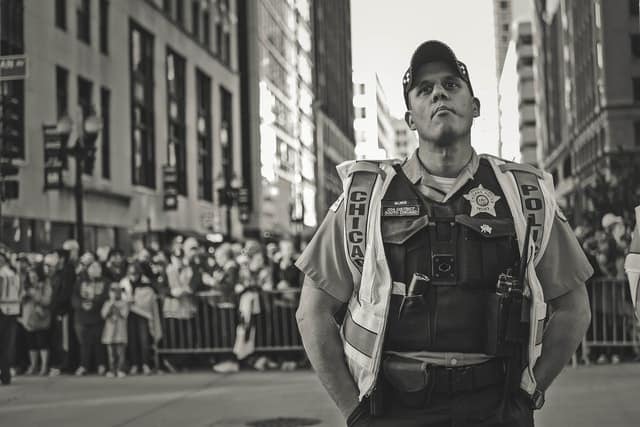
However, as unbelievable and terrifying as the events of that day are, and if you can, imagine what it was like for the first responders – the fire crews, the paramedics, and the police, who got the call that fateful day – the professional, dedicated people we all rely on in an emergency. Can you even imagine what was going through their minds – the traumatic images, seen with their own eyes, that will stay with them their entire lifetime – those burning, those jumping, those without hope, and those lifeless? There’s no blueprint for what makes a hero, just as there is also no clear and obvious reaction to tragic events. Deputy Fire Chief Jay Jonas was one of the lucky heroes that day, a fact he happily acknowledges, yet he still feels the painful, life-changing events that occurred:
“We ran to the main entrance of the World Trade Center. In front of the door, two heavily burned people lay on the floor. I needed to decide: Do I stop and help those two people or do I go upstairs and help maybe a hundred..?” – Deputy Chief Jay Jonas
New York Fire Department: Engine 43, Ladder 56, Division 7 Busy saving survivors from the doomed North Tower of the World Trade Center, only for the tower to give in and collapse above him, Jonas and his fellow firemen survived in Stairwell B – just. Sadly, 343 of Jonas’ NYC firefighter colleagues did not return from duty that day – neither did 23 NYC police officers nor 37 Port Authority officers. As Jonas himself says, “September 11 was the biggest urban search and rescue ever in the history of the United States, except that most people participating in it were killed.” Many of the first responders who did return from duty that day were seriously affected by their traumatic experiences, yet they still continued to report for duty at Ground Zero in the days and weeks that followed, enduring mentally and physically exhausting shifts in treacherous conditions as they looked hopefully for survivors, and as they painstakingly searched for human remains. Here are a few simple, yet harrowing, statistics of the huge personal toll that serving as a first responder takes on many U.S. emergency workers:
- 30% of first responders develop behavioral health conditions including, among others, depression and post-traumatic stress disorder (PTSD), compared with the general population rate of 20%
- Firefighters are reported to have higher suicide attempt and ideation rates than the general population, and
- Between 125 and 300 police officers commit suicide every year

Why Being a First Responder is No Ordinary Profession
First responders – firefighters, paramedics, and police officers – are normally the first to arrive at often dangerous situations, the first to contact the survivors of a disaster, offering both physical and emotional support, and the first to be there simply to save as many lives as possible. No other profession consistently requires this level of service and dedication. However, situations such as disasters, multiple-car pile-ups, and other scenes of devastation, natural or otherwise, take a huge personal toll on the wellbeing of those who get the emergency call. Vastly increased levels of stress and a far higher risk of trauma are commonplace for first responders.
Rising Violence Against First Responders & A Constantly Rising Workload
This stress, trauma, and other possible consequences can be derived from either the expected circumstances of an emergency event, eg. high number of fatalities caused by an earthquake, or it can be derived from unexpected circumstances arising from a first responder’s attendance, including rising rates of violence. For example, at the end of June this year, in Virginia Beach, VA, first responders (in this case, paramedics and firefighters) attending the scene of a fatal motorcycle crash was physically attacked by an “unruly crowd,” according to a Virginia Beach Fire Department briefing report on the accident. Furthermore, several people in the crowd actually followed the ambulance to Sentara Virginia Beach General Hospital, where they then proceeded to “jump on, kick and hit multiple EMS vehicles causing damage.” The hospital’s ER had to be placed on temporary lockdown as a precaution. There was no official reason given as to why the crowd reacted in that way. Assaults on first responders are far more common than you may think. Although official data is highly limited, a 2015 survey of 1,800 U.S. first responders found that 69% had experienced some form of violence in the last year; more specifically:
- Around 33% had been punched, slapped, or scratched
- Around 30% had been spat at
- Around 11% had been bitten, and
- More than 67% had been verbally abused
Note: Similar studies in Australia and Canada found that between 75% – 88% of first responders in those countries had experienced violence in the last year. According to many emergency service experts, a major underlying reason for the increased violence and stress experienced by all the first responders’ disciplines is the huge rise in medical call volumes. According to the National Fire Protection Association (NFPA), medical fire service (or EMS) calls have increased by a colossal 350% over the last 30 years, and that includes a near 50% rise in just the last decade. In New York, FDNY reports that more than 80% of the fire department’s total runs are now medically-related – in line with the fire service nationally. However, staffing levels in those departments have remained virtually stagnant for over a decade. Important: Although the term “first responder” can be interpreted in a number of ways, for the purpose of this article, the term identifies and includes the following groups:
- Emergency medical services (EMS) – both paramedics and ER hospital staff
- Firefighters, and
- Police officers

First Responders: Identifying Inherent Health Risks
The work carried out by first responders, nearly always done under emergency or highly pressurized conditions is an essential part of preserving both our national security and those functions deemed critical to the nation. However, there is a price to pay for this security, and it falls squarely on the shoulders of those at the frontline of this work. First responders, acting to ensure public health and safety, can experience a broad range of behavioral and mental health consequences as a result of their work-related exposure to the hazards of either natural or man-made disasters. Examples of this exposure (either directly or indirectly) include:
- Death
- Grief
- Injury and pain
- Personal loss
- Threats to personal safety
- Extended or long hours of work
- Frequent shifts / longer shift hours
- Poor sleep patterns, and
- Physical hardships, among others
In the case of natural disasters, there can be consequential and overwhelming disruption to the socio-economic and physical structure of an affected community. Those responding to such disasters can also include volunteer organizations, and these workers can also be subjected to behavioral and mental health issues – in fact, often more so, depending on their level of experience working within disaster conditions. Lastly, there is the least-acknowledged risk factor – the pace and speed of the work they do. Always being present on the front line means first responders are subjected to a high tempo within their profession. According to a study carried out under Ohio State University in 2013, 69% of first responders reported that they never have enough time to personally recover between traumatic events. As a direct result of this, many have experienced episodes of depression, anxiety, and stress, as well as PTSD symptoms, suicidal ideation, and other behavioral and mental health conditions.
First Responders: Common Behavioral & Mental Health Disorders
The most common and most widespread behavioral and mental health disorders across the different disciplines – firefighting, medical and policing – of first responders directly reflect the U.S. population’s battle with its mental wellbeing as a whole. The list of the most common disorders in the U.S., which are becoming more and more common too, highlights (i). depression, (ii). anxiety, (iii). dual diagnosis – defined as substance use disorder (SUD) co-occurring with a mental health issue, (iv). bipolar disorder, and (v). PTSD as the “Top 5” clinically-diagnosed conditions. According to the non-profit Mental Health America’s 2019 State of Mental Health in America report:
- Over 44 million American adults (18.07%) have a mental health condition
- 12.2% (5.3 million) adults with mental illness remain uninsured, and
- 56.4% of adults (that’s over 24 million) with a mental illness received no treatment
Additionally, the National Alliance on Mental Illness (NAMI) lists the following most common mental health disorders in order of prevalence:
- Anxiety Disorders – 19%
- Depression – 7%
- Dual Diagnosis – 4%
- Post Traumatic Stress Disorder (PTSD) – 4%
- Bipolar Disorder – 3%
It can be of little surprise then that 3 of the 4 of these disorders feature heavily as we look at those behavioral and mental health conditions which prevail among first responders the most; our list, however, also includes suicide and suicide ideation (or suicidal thoughts), which can be defined as “recurring thoughts of or preoccupation with committing suicide” – thinking about, considering, or planning suicide, and varying from fleeting thoughts, to extensive thoughts, to detailed planning. Please note: The majority of statistics provided below, too numerous to identify their source individually, were sourced collectively by the Substance Abuse and Mental Health Services Administration (SAMHSA) for their 2018 Bulletin entitled “First Responders: Behavioral Health Concerns, Emergency Response, and Trauma.”
1. Depression
Depression (known medically as major depressive disorder or as clinical depression) is a common but serious mood disorder. It causes severe symptoms that constantly affect your feelings and thoughts, and affects all daily activities, such as sleeping, eating, and working. Depression can manifest in first responders in the following ways:
- Persistent Depressive Disorder (Dysthymia):
- A depressed mood that lasts for at least two years
- Psychotic Depression:
- Severe depression, plus some form of accompanying psychosis, such as having delusions or hallucinations
- Seasonal Affective Disorder (SAD):
- The onset of depression during the winter months, accompanied by social withdrawal, increased sleep, and weight gain
Depression & EMS (Paramedics / ER Hospital Staff)
Depression is commonly reported in EMS first responders, and its severity varies across those studies done on the subject – from just above the national average to far higher than normal:
- For instance, among the medical team workers who responded to the 2011 East Japan earthquake, 21.4% (over 1 in 5) were later diagnosed with clinical depression.
Depression & Firefighters
As with EMS first responders, depression is also common among firefighters, with, again, varying severity of symptoms.
- One study found that volunteer firefighters reported higher levels of depression when compared to career firefighters (16.85% to 13.06%).
- Researchers concluded that firefighters face greater structural barriers to accessing mental health care (primarily in cost and availability of resources).
Competing demands for volunteer firefighters (as the majority work a separate job) creates a vulnerability to stress, which can, in turn, lead to the development or worsening of other behavioral health conditions, as well as clinical depression.
- In another study, 22.2% of female career firefighters reported depression.
- 38.5% of female volunteer firefighters also did so.
- According to the study’s authors, this could be down to the social pressures associated with working in a male-dominated profession.
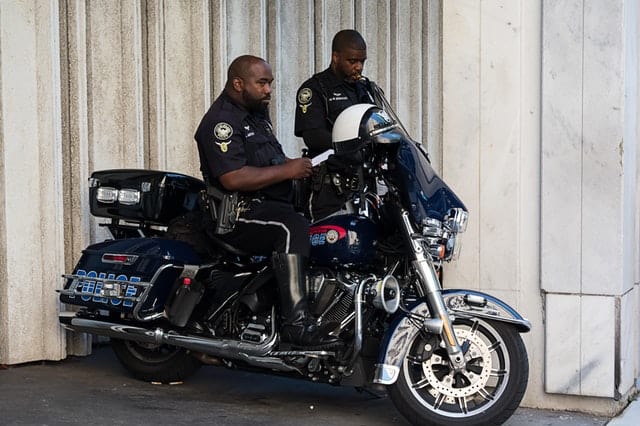
Depression & Police Officers
Lastly, depression has also been reported in police officers. One particularly worrying study on the mental health of attending police officers after the 9/11 attacks reported a 24.7% rate of depression – nearly 1 in 4, and a 47.7% rate of both depression and anxiety – nearly half.
2. Post-Traumatic Stress Disorder (PTSD)
Post-Traumatic Stress Disorder (far more commonly known as PTSD) is a type of anxiety disorder that develops after someone has been exposed to a traumatic event where they felt either fear for their life or fear of serious physical harm. Traumatic events that can trigger PTSD include:
- Sexual abuse
- Violent personal assaults (a rising issue among all first responders)
- Natural or man-made disasters, or
- Military service
PTSD & EMS (Paramedics / ER Hospital Staff)
Diagnoses and symptoms of PTSD in paramedics and ER hospital staff have been reported in numerous studies:
- EMS personnel reported higher “peritraumatic dissociation,” when people disassociate from events around them and proven to be the main indicator of future PTSD, during the Loma Prieta Bay Area earthquake in 1989 when compared with police.
- In a German study, 16.8% of emergency physicians were found to have probable PTSD.
PTSD & Firefighters
A 2012 alarming investigation into studies that looked at U.S. firefighter deaths reported that more than 50% were due to stress and exhaustion. As most of the firefighters in the U.S. are actually volunteers, around 69% in fact, studies in this group have found elevated levels of PTSD symptoms, while career firefighters reported higher levels of PTSD.
PTSD & Police Officers
In an extensive study following Hurricane Katrina in 2005, PTSD in a sample of police officers reported levels of between 7-19%. Following the terrorist attack of 9/11, it was found that 11% of police officers were suffering from PTSD (around 3 times higher than the national average). Additionally, in that particular study, it was reported that:
- PTSD increased as social support decreased
- PTSD prevalence was higher among:
- Those unable to work because of health (34.8%), and
- Those with unmet mental health needs (50.7%), and, finally
- PTSD prevalence was higher in women* (15.5%) than in men (10.3%)
*As mentioned earlier, this gender difference may be attributable to social pressures / more occupational discrimination with working in a male-dominated profession.
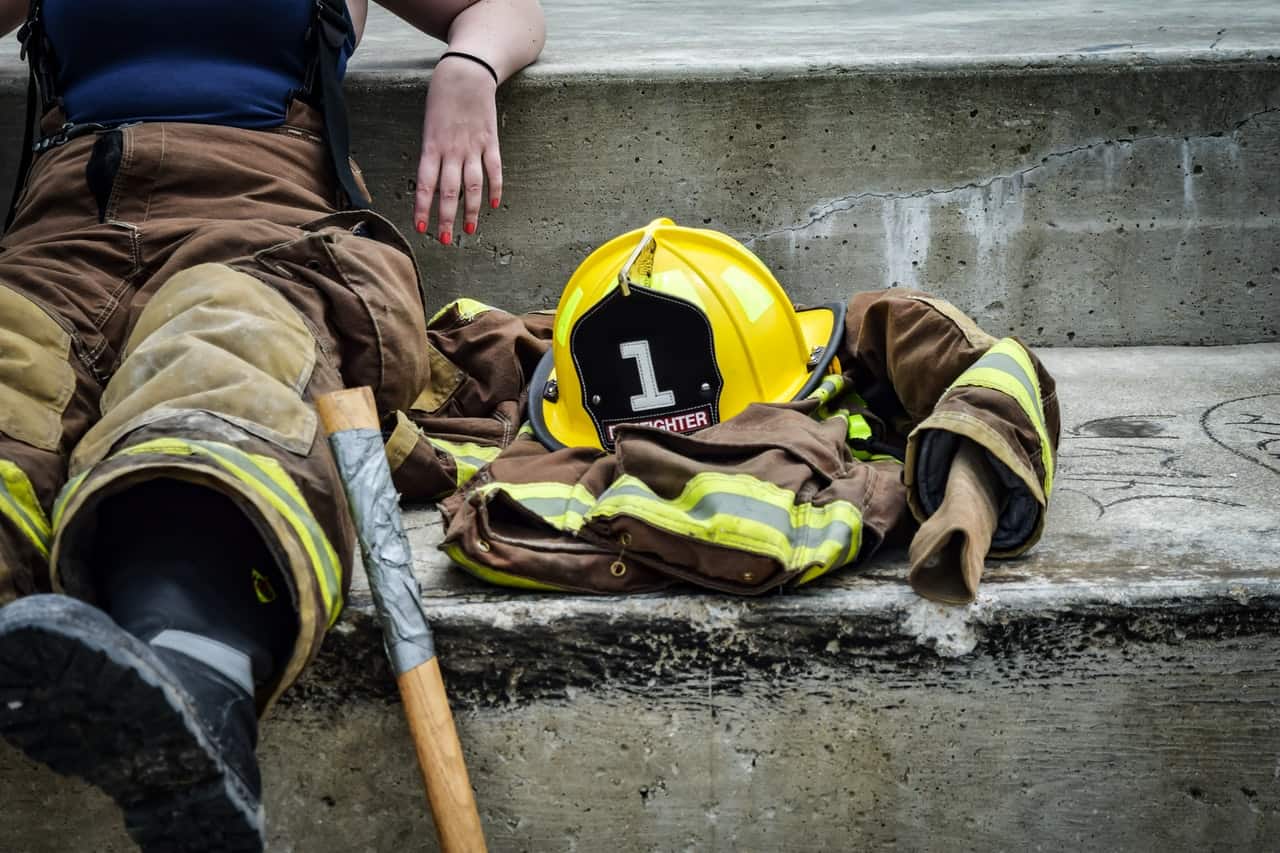
3. Suicide & Suicide Ideation
Committing the act of suicide, and thinking about the act of suicide, have many causes. Suicide ideation, thinking about the act, is normally the result of feeling like you are unable to cope with life as it is now. Being without hope and wanting to end your life, however, is not the solution. Additionally, there is also a genetic link to suicide – people who commit suicide are far more likely to have such history within their family line. Suicide attempts are more common among men; however, men are far more likely to succeed in their attempt, as they employ more lethal methods, eg. firearms. Those most at risk of suicide or suicide ideation are people who:
- Have attempted suicide previously
- Severely depressed
- Experience a traumatic event
- Suffer from SUD (drugs and/or alcohol)
- Feel suicidal and also own a firearm (or there’s one in the home)
- Have an underlying psychiatric disorder, eg. major depression or PTSD
- Family history of:
- Mental disorders
- SUDs
- Suicide, or
- Violence, including physical or sexual abuse
- Have chronic disease, chronic pain or terminal illness
- Are LGBTIQ in an unsupportive family/environment
Suicide and Suicide Ideation & EMS / Firefighters
Although most of the data collected from studies into suicide and suicide ideation is limited and not conducted randomly, it is estimated that suicidal thoughts are far more prevalent in first responders than the general population: One study, however, found a lifetime prevalence rate of:
- 28% for “feeling life is not worth living”
- 10.4% for serious suicidal ideation, and
- 3.1% for a past suicide attempt
In another study, it was found that having both EMS and firefighters had a sixfold increase in the likelihood of reporting a suicide attempt as compared to solely firefighters. In a separate study, it was reported that 37% of fire and EMS responders have contemplated suicide, nearly 10 times the general rate for American adults (2015). Furthermore, 6.6% of the same group reported at least one suicide attempt – compared with just 0.5% of the general population. Clearly, more focused and detailed research studies are still required.
Suicide and Suicide Ideation & Police Officers
Suicide attempts and suicide ideations have been reported in many studies of the police service. In a 2016 review-based study covering various data, it was found that the lifetime prevalence of suicidal ideation in police officers was:
- 25% (or 1 in 4) in female officers, and
- 23.1% in male officers
In a national analysis of suicide among police officers, proportionate mortality ratios (PMRs) found that there was a 169% increased likelihood compared with other first responder disciplines. In a 2014 study, a significant link between stress from work to suicidal ideation was identified, alongside depression and anger. Lastly, police officers with burnout showed a significantly greater suicide risk, at 117%.
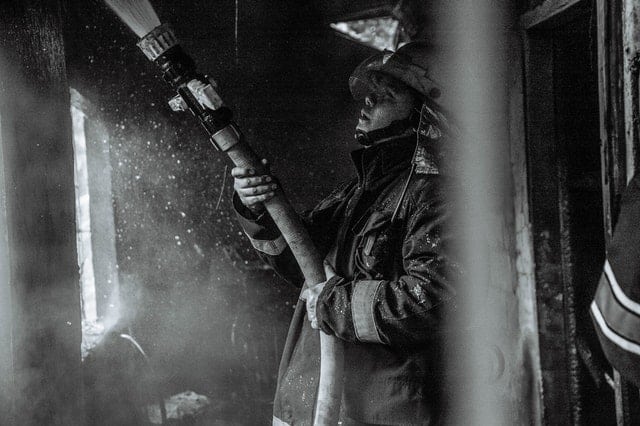
4. Substance Use / Dual Diagnosis (or Co-Occurring Disorder)
Dual diagnosis (which is also commonly referred to as co-occurring disorder) is the presence of a mental health disorder, such as depression or PTSD, co-occurring with a substance use disorder (SUD) – drug and/or alcohol addiction. When it comes to treatment, both disorders need to be dealt with simultaneously, as the one left untreated can prompt the return of the other.
Substance Use / Dual Diagnosis & Firefighters
One study carried out relatively recently, in 2017, found that career firefighters reported higher levels of alcohol misuse (as well as PTSD) compared with volunteer firefighters. Another study in the same year reported:
- Recent (in the past month) heavy or binge drinking in around 50%, or half, of male firefighters, and
- Driving while intoxicated (DUI) was reported in 9% of male firefighters (female firefighters account for only 5.1% of the total number of firefighters).
In a 2012 health study on female firefighters, 88.9% of them had drunk alcohol in the past month. In another study in 2017 looking at the same demographic, it was reported that:
- More than 60.5% consumed more than national guidelines
- 39.5% reported binge drinking, and
- 4.3% reported DUI
Substance Use Dual Diagnosis & Police Officers
In a 2015 study investigating alcohol use in police officers following Hurricane Katrina, there was a direct and significant link between hurricane relief efforts and dangerous levels of alcohol drinking. In another study (2014), the average number of alcoholic drinks consumed after Hurricane Katrina rose from 2 to a worrying 7 drinks per day. This data mirrors other studies that confirm addiction among police officers is now between 20-30% (or 1 in 4), as compared to around 10% of the general adult population. Repeated exposure to high levels of stress, life-threatening situations, and long hours all contribute to this high addiction rate.
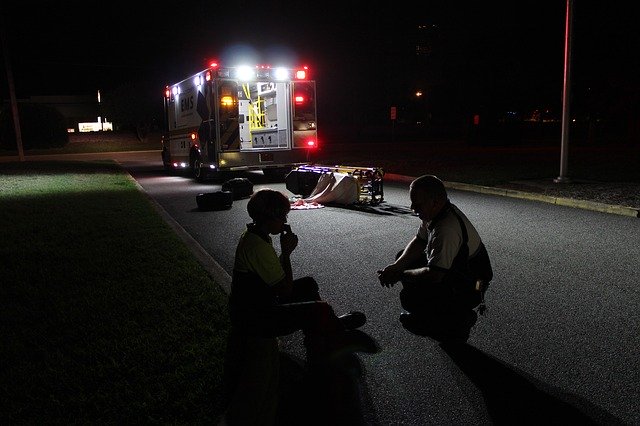
Reducing the Impact of Behavioral & Mental Health Factors among First Responders
As all of the previously mentioned information and statistics clearly show, behavioral and mental health concerns among first responders, and the factors that cause them, are far more serious than simply being an acceptable downside of emergency service work. Compared with the general population, first responders are at far great risk of mental health disorders and significantly more likely to have their lives severely disrupted by the associated symptoms of each, because they are always at the frontline of every disaster or serious incident, whether natural or man-made. Depression, PTSD, suicide and suicide ideation, and dual diagnosis (a mental health disorder coupled with substance abuse) are serious medical illnesses and require professional clinical treatment to be resolved successfully. As determined by the numerous studies touched upon previously, the main factors that can actually reduce these dangerous and inherent risks in emergency service work include:
- Personal resiliency
- Trust in yourself and your team,
- Time spent on the disaster scene
- One’s individual coping style, and
- Post-disaster mental health support
Therefore, public health agencies can help to prevent and to alleviate behavioral health issues in first responders through:
- Resiliency training
- Interventions to act on suspected burnout, and
- Peer support programs within each service
However, this would be a huge cultural shift in disciplines where first responders have previously played down the impact upon mental health or have used maladaptive techniques, eg. substance misuse, as methods of coping. Until that happens, similar rates of serious behavioral and mental health concerns will continue to dominate the lives of first responders.
